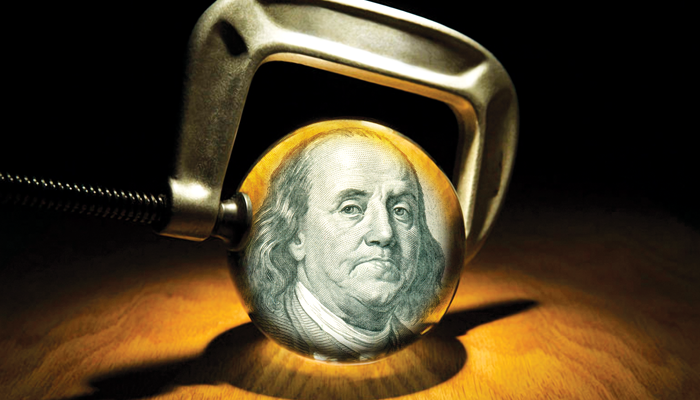To overcome liquidity challenges, address the underlying problems
Another January is upon us, and this should be the time of year when fuel dealers are, at least temporarily, comforted by the hum of delivery activity and an easing of customer scrutiny regarding the price of fuel.
This is that rare time of year when the profits roll in. For many companies, however, the peak of the heating season also means that long-simmering concerns about meeting payments become reality, as dealers pay suppliers within days of loading product but regularly must wait 30 days or more for customers to pay them back.
End the Cycle
Our industry experience tells us that for those dealers facing a cash crunch, the problem will be most acute by late winter and early spring. Many dealers dread this time of the year for this reason. My advice to those who face this issue is to pause and perform the analysis necessary to plot a course to end this cycle once and for all.
Our starting point is to determine the dealer’s current and projected liquidity situation. When I speak of liquidity, I am referring to a company’s cash on hand or its capacity to quickly obtain cash on demand, for example through lines of credit with lenders and suppliers.
Liquidity can be determined by analyzing balance sheet ratios comparing short-term assets with short-term liabilities. Companies exhibiting strong liquidity always seem to have more than enough bank line availability and often don’t need to borrow at all. Weak liquidity, by contrast, manifests itself in the form of a growing, year-round material balance on your line of credit – a never-ending battle to stay current with suppliers and vendors or even a frustratingly slow response from your banker when you request a larger credit line.
Two Types of Problem
If you are experiencing weakened liquidity, it is important to take the time to understand the root cause of the cash crunch. In its simplest forms, we can classify dealer liquidity issues into one of two distinct buckets – a structural deficiency or a profit deficiency. The suggested course of action to our financial and banking advisory clients will differ depending upon which issue is most pronounced.
A structural deficiency is a misalignment in the credit facilities supporting the dealer that has surfaced over time, generally over the course of several years. In this situation, a loan facility intended for short-term use now supports both short-term and long-term liabilities, leading to a gradual but material reduction in available credit space, or worse, a period of credit line over-advances with your bank.
This situation commonly results from a recent history of losses (e.g., from a historically warm winter or a hedging issue) or the use of cash from operations to fund the purchase of long-term assets, such as vehicles, bulk plant upgrades or propane tanks. Effectively addressing a structural deficiency may require a reconfiguring of the existing loan with a bank, the introduction of new capital or perhaps the negotiation of modified payment terms with suppliers and vendors.
Insufficient Profit
In the case of a profit deficiency, by contrast, the loan structure may already be the best the dealer can reasonably expect, but the company is beset by consistent earnings underperformance. In other words, the dealer has been unable to post the profit necessary to meet both its general expenses and its debt obligations.
This situation is best addressed via a comprehensive budgeting exercise that may include rethinking long-held margin goals, challenging expense and staffing structures, or through improved revenue streams from new product offerings, different service contract offerings and revised hourly billing rates. While on the surface the solution may seem straightforward, in our experience such changes are often the toughest corrections for management to implement.
Following the identification of the applicable deficiency (or deficiencies, as both often exist at a single dealer), it can be tough for dealers to navigate a course themselves to address the situation effectively. The strengths of management teams differ greatly in our fragmented industry. Some companies have owners or managers well versed in finance and banking relationships who can effectively draw upon these skills to proactively suggest an alternate loan structure with a high probability of bank approval to correct a structural deficiency. Many other companies lack this specific expertise. Likewise, some companies require assistance in organizing comprehensive budgets to segment their business, right-size operations and address profit deficiencies.
The course of action for each issue has, by nature, a different timeline to complete and carries with it varying levels of complexity to solve. Seeking professional financial assistance can be a vital step in plotting the best approach to any structural or profit deficiencies at hand. Identifying the cause of your company’s liquidity situation is a vital starting point in avoiding the frustration that many dealers experience each winter.





